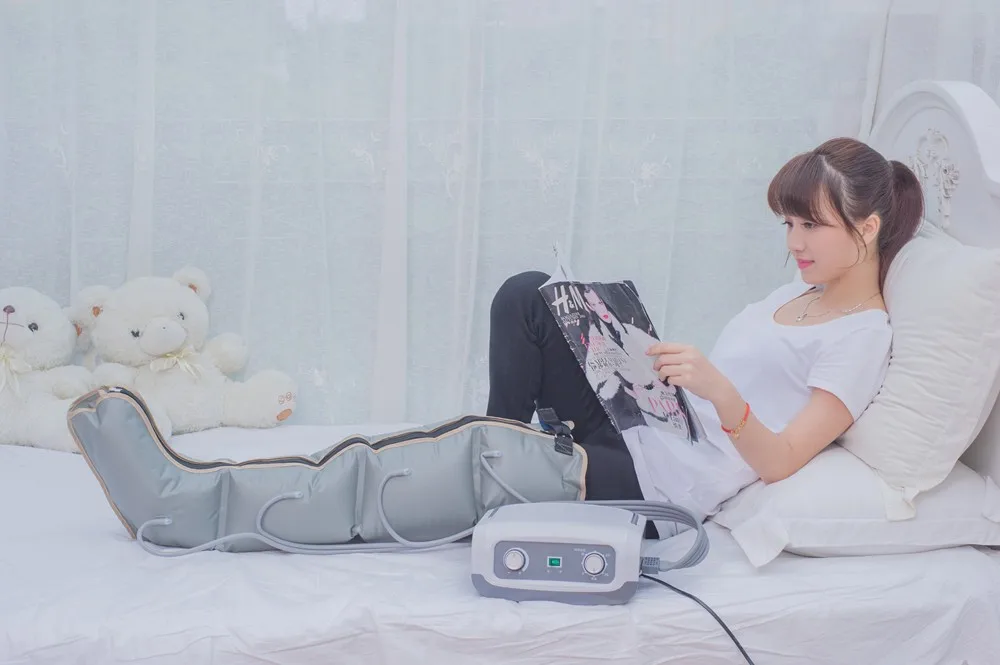
Klingelhoefer L, Bhattacharya K, Reichmann H. Restless legs syndrome in multiple sclerosis: risk factors and effect on sleep quality – a case-control study. Choosing the best pneumatic compression device for edema can be difficult as there are so many considerations, such as LifePro, CINCOM, FIT KING, QUINEAR, Vive Precision, SHINE WELL, DOCTOR LIFE.Were here to help you to pick out the top 16 Best Pneumatic Compression Device For Edema with our handy buying guide. Monschein T, Schestak C, Schillerwein-Kral C, et al. Fatigue in multiple sclerosis: a look at the role of poor sleep. SPRYNG Wireless Leg Compression Calf Wraps - (Pack of 2) Rechargeable Wireless Pneumatic Compression Devices for Calf, Muscle Recovery Tool for Improved Blood Circulation and Athletic Performance. Restless legs syndrome across the lifespan: symptoms, pathophysiology, management and daily life impact of the different patterns of disease presentation. doi:10.1111/jsr.12880ĭidato G, Di Giacomo R, Rosa GJ, Dominese A, de Curtis M, Lanteri P. Restless legs syndrome and health‐related quality of life in adults with multiple sclerosis. PCDs resulted in clinically significant improvements in symptoms of RLS in comparison to the use of sham devices and may be an effective adjunctive or alternative therapy for RLS.Ĭ Identifier: NCT00479531.Cederberg KLJ, Jeng B, Sasaki JE, Braley TJ, Walters AS, Motl RW. Complete relief occurred in one third of subjects using therapeutic and in no subjects using sham devices.

Pneumatic compression devices and yoga also improve RLS-related disorders. Both Epworth sleepiness scale (6.5 +/- 4.0 vs 11.3 +/- 3.9, respectively, p = 0.04) and fatigue (4.1 +/- 2.1 vs 6.9 +/- 2.0, respectively, p = 0.01) improved more with therapeutic devices than sham devices. The severity of primary RLS symptoms can be significantly ameliorated by exercise training, transcutaneous spinal direct current stimulation, pneumatic compression devices, light therapy, repetitive transcranial magnetic stimulation, and acupuncture. All quality of life domains improved more with therapeutic than sham devices (social function 14% vs 1%, respectively p = 0.03 daytime function 21% vs 6%, respectively, p = 0.02 sleep quality 16% vs 8%, respectively, p = 0.05 emotional well-being 17% vs 10%, respectively, p = 0.15). Therapeutic PCDs significantly improved all measured variables more than shams. Measures of severity of illness, quality of life, daytime sleepiness, and fatigue were compared at baseline and after 1 month of therapy. Because RLS symptoms are often worse at night, they can disrupt sleep patterns and lead to fatigue during the day. Subjects wore a therapeutic or sham device prior to the usual onset of symptoms for a minimum of 1 h daily. One of the primary benefits of pneumatic compression therapy (pcd) for Restless Leg Syndrome (RLS) is its ability to improve sleep quality and daytime functioning.

Best pneumatic compression device for rls trial#
We performed a prospective, randomized, double-blinded, sham-controlled trial of individuals with RLS. We sought to assess the efficacy of PCDs as a nonpharmacologic treatment for RLS.
Best pneumatic compression device for rls series#
We sought to assess the efficacy of PCDs as a nonpharmacologic treatment for RLS. Uncontrolled series using pneumatic compression devices (PCDs) have been shown to reduce symptoms of RLS. Uncontrolled series using pneumatic compression devices (PCDs) have been shown to reduce symptoms of RLS. Pharmacotherapy for restless legs syndrome (RLS) may be ineffective or complicated by side effects.


 0 kommentar(er)
0 kommentar(er)
